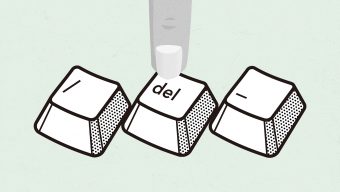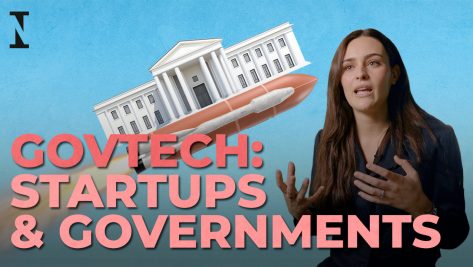If a company is profitable, has cash and does not know how to invest it for a return, that money should be given back to shareholders. This is a basic principle from a financial point of view. But these rules generally don’t apply, since other aspects related to human behavior come into play. Thus, the question arises whether it is a financial or psychological matter… and the latter, as it turns out, has a considerable influence.
Dividends must be maintained
Shareholders get used to dividends once they start rolling in, so they must continue to be paid out over the course of time. Indeed, determining a proper dividend policy requires more than looking at profitability or the amount of cash the company is generating. The company must also consider its ability to sustain the dividends in the future.
It may seem like the most obvious practice would be to explain to shareholders every year whether the company was profitable enough and determine the dividend based on performance. However, that is not the case, since the information available to shareholders is inconsistent. Those who have received dividends expect to get at least the same amount in the future unless it is well justified that the company needs cash.
All we have to do is look at the behavior of large companies, which predominantly define their dividend policy as a fixed amount per share, not a payout (percentage of profits). This policy facilitates the management of shareholders who expect the same dividend per share every year and establishes the expected minimum return per share—which is also very relevant when investing in a company.
In this regard, there is a firmly held belief that what is given cannot be taken away. People expect to receive whatever was promised and although a company’s performance should be what determines its variable dividend each year, in reality human behavior is not hardwired to assimilate that so easily. To handle this, companies sometimes establish a stable cash dividend over the years and pay other extraordinary dividends in the form of stock buybacks. Aside from its different tax implications, this practice enables the company to “camouflage” an extraordinary dividend by way of an increased share price without creating the same need to maintain the practice in the future.
The financial aspects are clear, but there is more to examine when it comes to paying dividends at a company. It is essential to consider certain psychological aspects of human behavior when determining a proper dividend policy.
Conflicts of interest or agency costs
One key factor for the success of a company is to define what proper corporate governance looks like. It essentially entails aligning the interests of shareholders with those of the executives (called “agency costs”). Dividends can play a key role in reducing agency costs by introducing a certain degree of discipline in the company. The importance of maintaining a stable dividend every year promotes the attainment of minimum results and the incentive to achieve that goal among the executives.
At family companies, a clear dividend policy helps differentiate the role of shareholders from the role of executives, who in this type of organization often overlap, which can lead to governance conflicts.
Indeed, on some occasions this discipline effect may lead to less-than-ideal situations for companies, which, by maintaining the dividend, raise their debt above the optimum levels. In this respect, it is important to teach shareholders and board members that there needs to be some flexibility, depending on the varying business circumstances, to avoid putting excessive pressure on the company’s directors that leads to ill-advised actions.
Signaling effect
The value of companies depends on expectations around cash generation and the risks associated with the business. Publicly traded firms are required to file quarterly reports on earnings and future outlook, which is the basis of their intrinsic value.
Oftentimes, shareholders need for the results to be “tangible” to have more faith in what the company is promising. This means that the communication of the dividend payment is almost always a sign that things are going well and that the company is in good financial health. Once again, human behavior transcends purely financial rules.
The reporting of changes to the dividend policy also has to be well timed to maximize the impact on the company’s value.
It might seem like a no-brainer to follow the principle that, if the company is profitable and has cash, a portion of this is returned to the shareholders. However, it is important to be careful and clearly understand that these must be sustainable in the future, since shareholders will expect to receive them regardless of how the company is doing.
Different phases
Companies in an early or high-growth phase should be more cautious when defining their dividend policy, as much of their resources must be reinvested and their visibility into future cash requirements is less predictable.
Along these lines, we could look at the case of Apple, which went many years without paying dividends despite having a very high cash surplus. The company justified this policy by citing the need to maintain liquidity in order to keep growing and remain a technology pioneer. This reasoning was questioned by a minority shareholder, who demanded that part of that treasury be distributed, which caused Apple to change its policy and start paying dividends.
Companies at a mature stage of development usually have greater clarity about their future cash needs and can be more generous with their dividend policy.
Ease of access to financing
Companies’ ease of access to the financial market is also relevant when establishing these policies. Publicly traded companies with greater access to a capital market can be more aggressive with dividend distribution than medium-sized companies. This is because they have quicker, easier access to new financing, even for the purpose of maintaining the dividend.
In line with this argument, the degree of development of capital markets also facilitates the design of dividend policies. This is because the efficiency of the market makes it possible to satisfy the shareholders’ varying preferences, so that they can choose to sell part of their shares if they want liquidity or reinvest the dividend distributed in the purchase of shares.
Organizations sometimes use dividends to send the message that everything is going well; essentially, as a kind of signaling effect to show that the company is in a good place, since it is able to distribute dividends.
Other aspects
In defining the dividend policy, it is also important to include tax considerations, since payment is not the same for dividends as it is for capital gains, which, furthermore, varies by country. This favors policies more inclined toward the repurchase of shares in publicly traded companies in places where capital gains taxes are lower than dividend taxes.
Likewise, it is vital to consider possible legal or contractual restrictions on the payment of dividends. Legal restrictions occur if a minimum reserve level is not reached or no profits are generated. Meanwhile, contractual restrictions are usually linked to bank loans when the company has a certain level of debt and this includes restrictions (loan covenants) on the payment of dividends to avoid decapitalization of the company.
© IE Insights.











